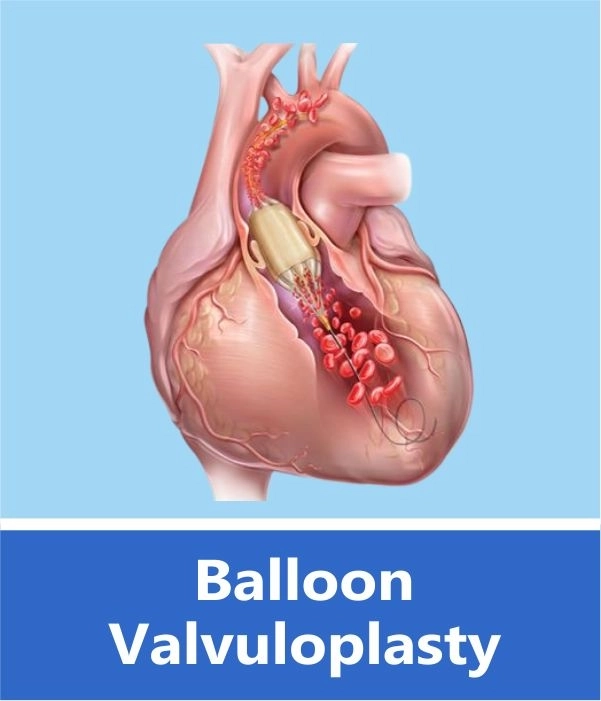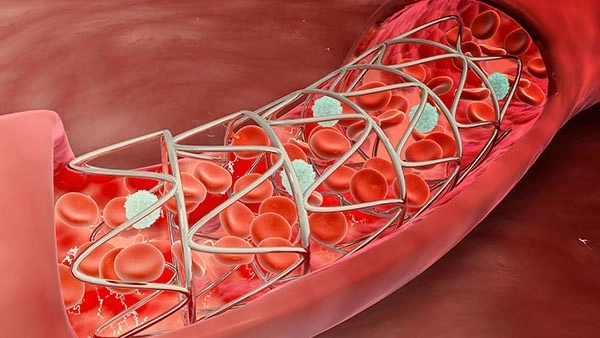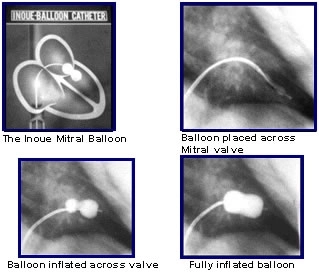

Balloon Valvuloplasty

Balloon Mitral valvuloplasty
It is a highly successful technique in selected cases of Mitral stenosis. It should not be performed when the valve is very calcified or in presence of very severe subvalvular stenosis. The presence of atrial fibrillation is no longer a contraindication to the procedure, provided clot in the left atrium is excluded by Trans-esophageal echo. This technique is also very useful in tackling cases of Mitral stenosis detected during pregnancy.

Percutaneous Balloon Mitral Valvuloplasty is a procedure used to dilate the mitral valve in the setting of rheumatic mitral valve stenosis. A catheter is inserted into the femoral vein, advanced to the right atrium and across the interatrial septum. Then, the mitral valve is crossed with a balloon that is inflated to relieve the fusion of the mitral valve commissures effectively, which acts to increase the mitral valve area and reduce the degree of mitral stenosis. Mitral regurgitation is a potential complication, and thus percutaneous balloon mitral valvuloplasty (PBMV) is contraindicated if moderate or severe regurgitation is present. The Wilkins score examines mitral valve morphology and is determined via echocardiography to assess the likelihood of using PBMV based on certain echocardiographic criteria.A 30-year-old lady, the mother of two, presented with severe Mitral stenosis, with an estimated valve area on Echocardiography of 0.9 sq. cm, and a peak gradient across the Mitral valve of 25 mm Hg. She underwent balloon valvuloplasty using the Inoue Balloon. During the procedure, a mean gradient of 14 mm across the Mitral valve was recorded. Following the dilatation of the valve, the pressure gradient disappeared. The patient was discharged from the hospital the next morning.
